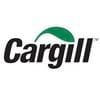Feeding altrenogest in late lactation improves fertility in primiparous sows having reduced litter size
Published: January 20, 2025
Source : N. Am-In 1, R. Kirkwood 2 / 1Department of Obstetrics, Gynaecology and Reproduction, Faculty of Veterinary Science, Chulalongkorn University, Bangkok, Thailand; 2 School of Animal and Veterinary Sciences, University of Adelaide, Roseworthy, Australia.
Summary
Keywords: altrenogest, late lactation, litter size
Introduction:
During late lactation ovarian follicles grow and regress in waves and follicular waves have also been documented in pre-pubertal gilts. The wean-to-oestrus interval (WOI) and oocyte quality can each be influenced by when sows are bred relative to stage of the wave. It is known that feeding altrenogest (AT) to primiparous sows after weaning can improve reproductive performances and that ovarian follicle diameters are reported to be greater in sows after AT treatment for 8 or 15 days. These effects likely involve an effect of synchronization of follicle waves with mating. Additionally, it was found that an increase of the number of corpora lutea or progesterone level increases litter size in sows. Sows with small litters (≤8 piglets) may experience a late lactation oestrus or a very short WOI, impairing predictability of return to oestrus after weaning and fertility after breeding. Administration of AT during last week of lactation will prevent lactation oestrus and synchronize oestrus after weaning; this, in turn, may improve subsequent reproductive performance.
Materials and Methods:
40 primiparous Landrace x Yorkshire sows nursing 8 piglets or less at 21 days of a 28 day lactation were included in the study. They were randomly assigned to receive orally 20 mg/d AT (Virbagest®, Virbac) during the last 7 days of lactation (n=20) including day of weaning, or served as controls (n=20). All sows were subjected to transrectal ultrasound ovarian examination at the onset of oestrus and the number of pre-ovulatory follicles (≥0.6 mm.) were recorded. The WOI was recorded and oestrous sows mated within 12 hours after showing standing heat and again 24 hours later by artificial insemination. Subsequent farrowing rates and litter sizes were recorded.
Results:
All sows exhibited oestrus and were inseminated. The control group had a shorter WOI than the AT-fed group (2.7±1.0 vs. 5.7±1.4 days, respectively; P≤0.0001). The farrowing rate were not significantly different between treated and control groups (95 vs 90%) reflecting the excellent breeding management on this farm. However, compared to the control sows, the AT-fed sows had more pre-ovulatory follicles (22.7±3.6 vs.17.3±3.5; P≤0.0001), total born piglets (11.9±1.8 vs.10.6±2.0; P=0.03) and piglets born alive (11.2±1.4 vs.9.7±1.9; P=0.01).
Conclusion:
The longer WOI in AT-fed sows supports our suggestion that a small litter size will result in abnormally short WOI but that AT will stabilize follicle waves and result in a normal 4-5 day follicular phase and improved oocyte quality. In association with increased follicle numbers, this results in larger second litters.
Disclosure of Interest: None Declared.
Published in the proceedings of the International Pig Veterinary Society Congress – IPVS2016. For information on the event, past and future editions, check out https://www.theipvs.com/future-congresses/.
Content from the event:
Related topics:
Recommend
Comment
Share

Would you like to discuss another topic? Create a new post to engage with experts in the community.









